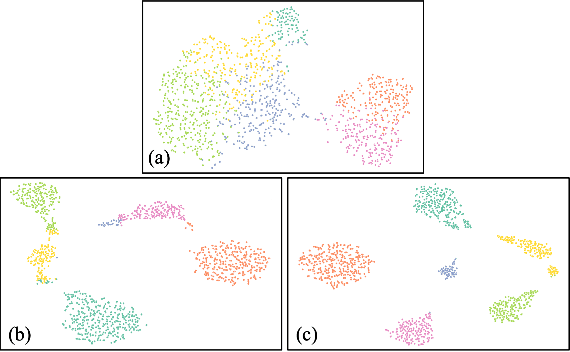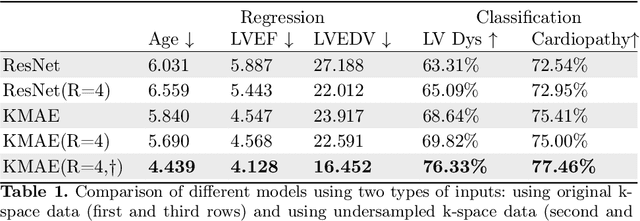Ruochen Li
The Ramon Llull's Thinking Machine for Automated Ideation
Aug 28, 2025Abstract:This paper revisits Ramon Llull's Ars combinatoria - a medieval framework for generating knowledge through symbolic recombination - as a conceptual foundation for building a modern Llull's thinking machine for research ideation. Our approach defines three compositional axes: Theme (e.g., efficiency, adaptivity), Domain (e.g., question answering, machine translation), and Method (e.g., adversarial training, linear attention). These elements represent high-level abstractions common in scientific work - motivations, problem settings, and technical approaches - and serve as building blocks for LLM-driven exploration. We mine elements from human experts or conference papers and show that prompting LLMs with curated combinations produces research ideas that are diverse, relevant, and grounded in current literature. This modern thinking machine offers a lightweight, interpretable tool for augmenting scientific creativity and suggests a path toward collaborative ideation between humans and AI.
Focus Directions Make Your Language Models Pay More Attention to Relevant Contexts
Mar 30, 2025Abstract:Long-context large language models (LLMs) are prone to be distracted by irrelevant contexts. The reason for distraction remains poorly understood. In this paper, we first identify the contextual heads, a special group of attention heads that control the overall attention of the LLM. Then, we demonstrate that distraction arises when contextual heads fail to allocate sufficient attention to relevant contexts and can be mitigated by increasing attention to these contexts. We further identify focus directions, located at the key and query activations of these heads, which enable them to allocate more attention to relevant contexts without explicitly specifying which context is relevant. We comprehensively evaluate the effect of focus direction on various long-context tasks and find out focus directions could help to mitigate the poor task alignment of the long-context LLMs. We believe our findings could promote further research on long-context LLM alignment.
CTS-CBS: A New Approach for Multi-Agent Collaborative Task Sequencing and Path Finding
Mar 26, 2025Abstract:This paper addresses a generalization problem of Multi-Agent Pathfinding (MAPF), called Collaborative Task Sequencing - Multi-Agent Pathfinding (CTS-MAPF), where agents must plan collision-free paths and visit a series of intermediate task locations in a specific order before reaching their final destinations. To address this problem, we propose a new approach, Collaborative Task Sequencing - Conflict-Based Search (CTS-CBS), which conducts a two-level search. In the high level, it generates a search forest, where each tree corresponds to a joint task sequence derived from the jTSP solution. In the low level, CTS-CBS performs constrained single-agent path planning to generate paths for each agent while adhering to high-level constraints. We also provide heoretical guarantees of its completeness and optimality (or sub-optimality with a bounded parameter). To evaluate the performance of CTS-CBS, we create two datasets, CTS-MAPF and MG-MAPF, and conduct comprehensive experiments. The results show that CTS-CBS adaptations for MG-MAPF outperform baseline algorithms in terms of success rate (up to 20 times larger) and runtime (up to 100 times faster), with less than a 10% sacrifice in solution quality. Furthermore, CTS-CBS offers flexibility by allowing users to adjust the sub-optimality bound omega to balance between solution quality and efficiency. Finally, practical robot tests demonstrate the algorithm's applicability in real-world scenarios.
BP-SGCN: Behavioral Pseudo-Label Informed Sparse Graph Convolution Network for Pedestrian and Heterogeneous Trajectory Prediction
Feb 21, 2025



Abstract:Trajectory prediction allows better decision-making in applications of autonomous vehicles or surveillance by predicting the short-term future movement of traffic agents. It is classified into pedestrian or heterogeneous trajectory prediction. The former exploits the relatively consistent behavior of pedestrians, but is limited in real-world scenarios with heterogeneous traffic agents such as cyclists and vehicles. The latter typically relies on extra class label information to distinguish the heterogeneous agents, but such labels are costly to annotate and cannot be generalized to represent different behaviors within the same class of agents. In this work, we introduce the behavioral pseudo-labels that effectively capture the behavior distributions of pedestrians and heterogeneous agents solely based on their motion features, significantly improving the accuracy of trajectory prediction. To implement the framework, we propose the Behavioral Pseudo-Label Informed Sparse Graph Convolution Network (BP-SGCN) that learns pseudo-labels and informs to a trajectory predictor. For optimization, we propose a cascaded training scheme, in which we first learn the pseudo-labels in an unsupervised manner, and then perform end-to-end fine-tuning on the labels in the direction of increasing the trajectory prediction accuracy. Experiments show that our pseudo-labels effectively model different behavior clusters and improve trajectory prediction. Our proposed BP-SGCN outperforms existing methods using both pedestrian (ETH/UCY, pedestrian-only SDD) and heterogeneous agent datasets (SDD, Argoverse 1).
Unified Spatial-Temporal Edge-Enhanced Graph Networks for Pedestrian Trajectory Prediction
Feb 04, 2025Abstract:Pedestrian trajectory prediction aims to forecast future movements based on historical paths. Spatial-temporal (ST) methods often separately model spatial interactions among pedestrians and temporal dependencies of individuals. They overlook the direct impacts of interactions among different pedestrians across various time steps (i.e., high-order cross-time interactions). This limits their ability to capture ST inter-dependencies and hinders prediction performance. To address these limitations, we propose UniEdge with three major designs. Firstly, we introduce a unified ST graph data structure that simplifies high-order cross-time interactions into first-order relationships, enabling the learning of ST inter-dependencies in a single step. This avoids the information loss caused by multi-step aggregation. Secondly, traditional GNNs focus on aggregating pedestrian node features, neglecting the propagation of implicit interaction patterns encoded in edge features. We propose the Edge-to-Edge-Node-to-Node Graph Convolution (E2E-N2N-GCN), a novel dual-graph network that jointly models explicit N2N social interactions among pedestrians and implicit E2E influence propagation across these interaction patterns. Finally, to overcome the limited receptive fields and challenges in capturing long-range dependencies of auto-regressive architectures, we introduce a transformer encoder-based predictor that enables global modeling of temporal correlation. UniEdge outperforms state-of-the-arts on multiple datasets, including ETH, UCY, and SDD.
TimeFlow: Longitudinal Brain Image Registration and Aging Progression Analysis
Jan 15, 2025Abstract:Predicting future brain states is crucial for understanding healthy aging and neurodegenerative diseases. Longitudinal brain MRI registration, a cornerstone for such analyses, has long been limited by its inability to forecast future developments, reliance on extensive, dense longitudinal data, and the need to balance registration accuracy with temporal smoothness. In this work, we present \emph{TimeFlow}, a novel framework for longitudinal brain MRI registration that overcomes all these challenges. Leveraging a U-Net architecture with temporal conditioning inspired by diffusion models, TimeFlow enables accurate longitudinal registration and facilitates prospective analyses through future image prediction. Unlike traditional methods that depend on explicit smoothness regularizers and dense sequential data, TimeFlow achieves temporal consistency and continuity without these constraints. Experimental results highlight its superior performance in both future timepoint prediction and registration accuracy compared to state-of-the-art methods. Additionally, TimeFlow supports novel biological brain aging analyses, effectively differentiating neurodegenerative conditions from healthy aging. It eliminates the need for segmentation, thereby avoiding the challenges of non-trivial annotation and inconsistent segmentation errors. TimeFlow paves the way for accurate, data-efficient, and annotation-free prospective analyses of brain aging and chronic diseases.
Learning to Generate Research Idea with Dynamic Control
Dec 19, 2024Abstract:The rapid advancements in large language models (LLMs) have demonstrated their potential to accelerate scientific discovery, particularly in automating the process of research ideation. LLM-based systems have shown promise in generating hypotheses and research ideas. However, current approaches predominantly rely on prompting-based pre-trained models, limiting their ability to optimize generated content effectively. Moreover, they also lack the capability to deal with the complex interdependence and inherent restrictions among novelty, feasibility, and effectiveness, which remains challenging due to the inherent trade-offs among these dimensions, such as the innovation-feasibility conflict. To address these limitations, we for the first time propose fine-tuning LLMs to be better idea proposers and introduce a novel framework that employs a two-stage approach combining Supervised Fine-Tuning (SFT) and controllable Reinforcement Learning (RL). In the SFT stage, the model learns foundational patterns from pairs of research papers and follow-up ideas. In the RL stage, multi-dimensional reward modeling, guided by fine-grained feedback, evaluates and optimizes the generated ideas across key metrics. Dimensional controllers enable dynamic adjustment of generation, while a sentence-level decoder ensures context-aware emphasis during inference. Our framework provides a balanced approach to research ideation, achieving high-quality outcomes by dynamically navigating the trade-offs among novelty, feasibility, and effectiveness.
MLR-Copilot: Autonomous Machine Learning Research based on Large Language Models Agents
Aug 26, 2024



Abstract:Machine learning research, crucial for technological advancements and innovation, often faces significant challenges due to its inherent complexity, slow pace of experimentation, and the necessity for specialized expertise. Motivated by this, we present a new systematic framework, autonomous Machine Learning Research with large language models (MLR-Copilot), designed to enhance machine learning research productivity through the automatic generation and implementation of research ideas using Large Language Model (LLM) agents. The framework consists of three phases: research idea generation, experiment implementation, and implementation execution. First, existing research papers are used to generate hypotheses and experimental plans vis IdeaAgent powered by LLMs. Next, the implementation generation phase translates these plans into executables with ExperimentAgent. This phase leverages retrieved prototype code and optionally retrieves candidate models and data. Finally, the execution phase, also managed by ExperimentAgent, involves running experiments with mechanisms for human feedback and iterative debugging to enhance the likelihood of achieving executable research outcomes. We evaluate our framework on five machine learning research tasks and the experimental results show the framework's potential to facilitate the research progress and innovations.
IQA-EVAL: Automatic Evaluation of Human-Model Interactive Question Answering
Aug 24, 2024



Abstract:To evaluate Large Language Models (LLMs) for question answering (QA), traditional methods typically focus on directly assessing the immediate responses generated by the models based on the given question and context. In the common use case of humans seeking AI assistant's help in finding information, these non-interactive evaluations do not account for the dynamic nature of human-model conversations, and interaction-aware evaluations have shown that accurate QA models are preferred by humans (Lee et al., 2023). Recent works in human-computer interaction (HCI) have employed human evaluators to conduct interactions and evaluations, but they are often prohibitively expensive and time-consuming to scale. In this work, we introduce an automatic evaluation framework IQA-EVAL to Interactive Question Answering Evaluation. More specifically, we introduce LLM-based Evaluation Agent (LEA) that can: (1) simulate human behaviors to generate interactions with IQA models; (2) automatically evaluate the generated interactions. Moreover, we propose assigning personas to LEAs to better simulate groups of real human evaluators. We show that: (1) our evaluation framework with GPT-4 (or Claude) as the backbone model achieves a high correlation with human evaluations on the IQA task; (2) assigning personas to LEA to better represent the crowd further significantly improves correlations. Finally, we use our automatic metric to evaluate five recent representative LLMs with over 1000 questions from complex and ambiguous question answering tasks, which comes with a substantial cost of $5k if evaluated by humans.
Classification, Regression and Segmentation directly from k-Space in Cardiac MRI
Jul 29, 2024



Abstract:Cardiac Magnetic Resonance Imaging (CMR) is the gold standard for diagnosing cardiovascular diseases. Clinical diagnoses predominantly rely on magnitude-only Digital Imaging and Communications in Medicine (DICOM) images, omitting crucial phase information that might provide additional diagnostic benefits. In contrast, k-space is complex-valued and encompasses both magnitude and phase information, while humans cannot directly perceive. In this work, we propose KMAE, a Transformer-based model specifically designed to process k-space data directly, eliminating conventional intermediary conversion steps to the image domain. KMAE can handle critical cardiac disease classification, relevant phenotype regression, and cardiac morphology segmentation tasks. We utilize this model to investigate the potential of k-space-based diagnosis in cardiac MRI. Notably, this model achieves competitive classification and regression performance compared to image-domain methods e.g. Masked Autoencoders (MAEs) and delivers satisfactory segmentation performance with a myocardium dice score of 0.884. Last but not least, our model exhibits robust performance with consistent results even when the k-space is 8* undersampled. We encourage the MR community to explore the untapped potential of k-space and pursue end-to-end, automated diagnosis with reduced human intervention.
 Add to Chrome
Add to Chrome Add to Firefox
Add to Firefox Add to Edge
Add to Edge